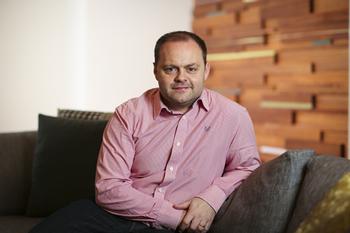Marketing 2.0: The Internet of Things and Wearable Technology
Add bookmarkDirect Line Group's Marketing Director, Mark Evans, talks about the opportunities with the Internet of Things and wearable technology within marketing.
 Mark Evans is the Marketing Director of UK insurance company Direct Line Group. He studied at Nottingham University for a BA in Economics and an MA in Corporate Strategy & Governance, and he started his career in Mars where he worked on a number of their global brands across sectors and geographies.
Mark Evans is the Marketing Director of UK insurance company Direct Line Group. He studied at Nottingham University for a BA in Economics and an MA in Corporate Strategy & Governance, and he started his career in Mars where he worked on a number of their global brands across sectors and geographies.
After Mars, Evans worked at 118118 and HSBC, before joining Direct Line Group in 2012. Over the past three years he has overseen the transformation of DLG's brands and marketing approach. He is in the 2015 Marketing Power 100 and the 2015 Marketing Week Vision 100.
In the first part of his interview with CX Network he discussed the trends in digital marketing and their impact on customer service satisfaction. Today, he talks about the impact of buzzword the Internet of Things, wearable technology and how customer experience and marketing differs in financial services from other industries.
Welcome back Mark, The Internet of Things is a big buzzword within marketing and CX, but what does it really mean for the industry? How does it impact your role and the wider insurance industry?
SEE ALSO: Trending Topics in Customer Experience [report]
The prospect of connected homes and connected transport, fuelled by the Internet of Things, is highly relevant to the insurance sector.
It is conceivable that the nature of the sector will shift from restitution to prevention because we have more data available as more and more in the world is tracked and measured. The increase in data enables us to better understand and meet our customers' needs.
This is therefore a source of competitive advantage if we can manage and use it better than our competitors, to improve consumers' lives in an ever-evolving digital world.
Ultimately it means we can be more connected to our customers, which will lead to better propositions, campaigns and customer experience. As far as the impact on my role and our industry, this type of change can only be good if it is harnessed in the right way.
I recently spoke at the Guardian Changing Media Summit and discussed how wearable technology might transform the life insurance sector in terms of providing cover to consumers that might otherwise be uninsurable. The same applies to drivers and home owners who would otherwise face excessively high premiums unless they were able to demonstrate their prudence in avoiding risks.
This could really change the future of how we manage our business and the value we provide. Thatã??s where digital-savvy and data-savvy marketers will win. It is an absolute necessity in the world of marketing to embrace these changes, in an era that could be described as Marketing 2.0.
How does CX and your approach to marketing in financial services differ from other industries?
There is an important nuance within insurance that differentiates us from other industries, in that the key moment of truth when utility is provided is when the customer makes a claim. However, this is a relatively infrequent occurrence.
At the time that customers lives have been impacted and we need to get them back on track as fast as possible, being efficient and taking all the hassle out of the process is the focus of our Direct Line "fixer" approach.
However, only a proportion of our customers make a claim each year and therefore every single interaction with us, such as making an amendment or renewing a policy, is the only way that people can form a judgement of how we will perform in their moment of need.
Hence we have to maintain exceptionally high standards of customer experience at all times to give customers reason to believe that the overall brand benefit is credible.
And how do you think financial services companies can learn from each other as well as other industries?
There are some shining examples of customer experience within financial services. Previously I worked at HSBC where the First Direct brand was the epitome of customer obsession.
What was interesting about First Direct was that the brand achieved significantly higher customer recommendation, as measured by Net Promoter Score, compared to the HSBC brand, despite using similar systems and processes. This highlights the criticality of creating a culture of empowerment and brand advocacy since this was the key difference between the two brands.
The fact that First Direct employees would sometimes take it upon themselves to sing Happy Birthday to their customers demonstrates that they really cared about them, regardless of the fact that they operate in a highly regulated context.
Finally, what would be your ultimate piece of advice for CX and marketing leaders to help them enhance the experience they offer to their customers?
My advice would be to try to create a 'golden thread' that takes the brand positioning all the way through the organisation.
In the case of Direct Line, the "fixer" thought flows through from communications to propositions, to social, to digital and customer experience, but also beyond that into culture and the overall ambition for the organisation.
If the whole organisation can rally behind a North Star thought from the brand then it can create great alignment and a rallying cry towards meeting target customers' needs.









![[BY INVITATION ONLY] The State of contact center efficiency in the age of AI](https://eco-cdn.iqpc.com/eco/images/logos/wMQuMdHjZYMR8XwzDeJJjK0n4X4mkLPRkJ08VEvR.webp)












